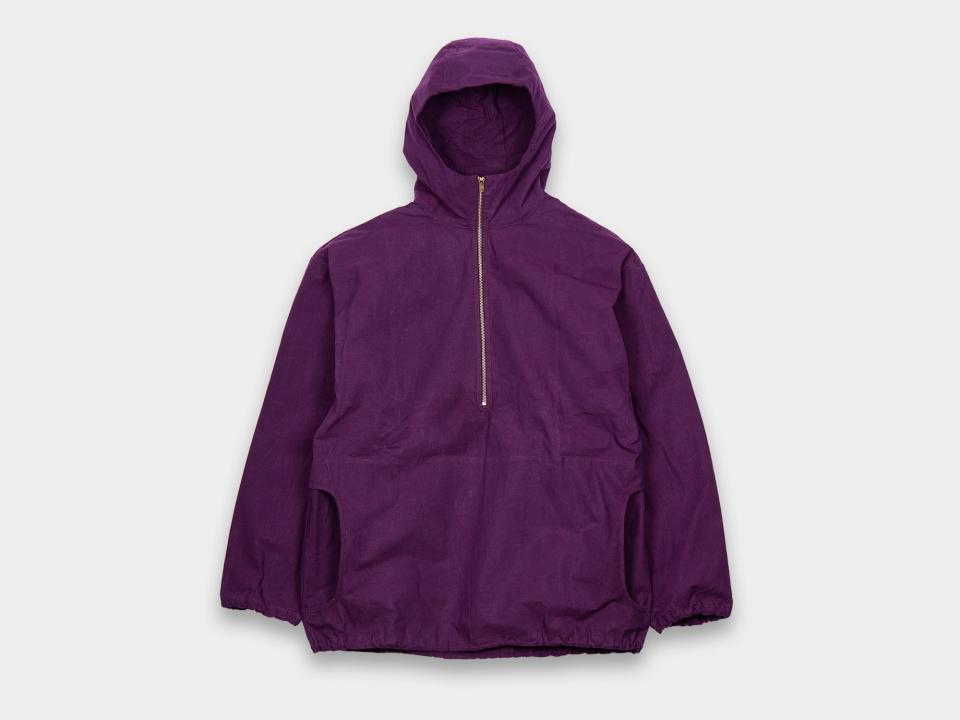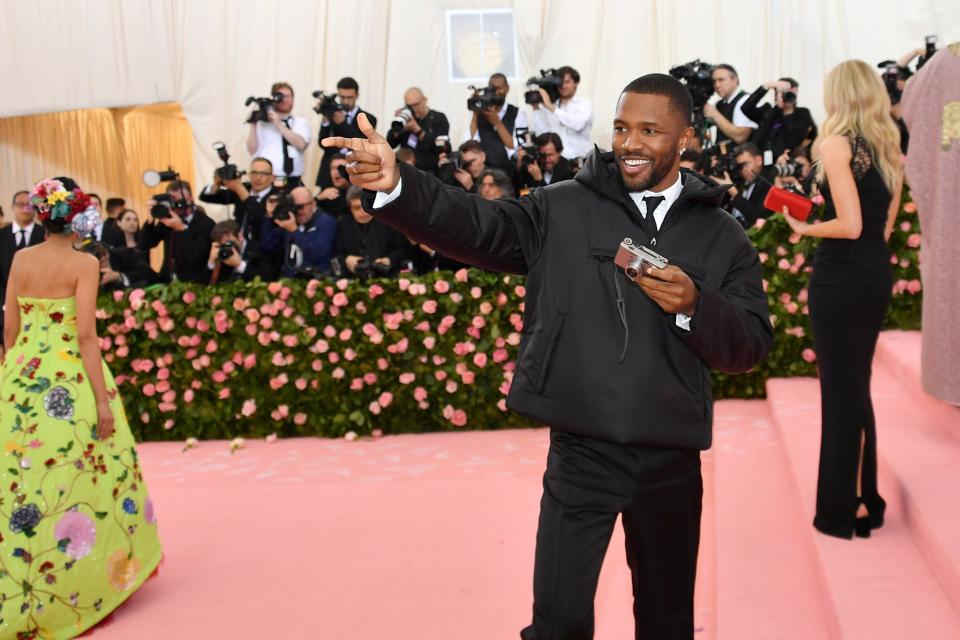In Defense of Hard Clothes
The most important thing about clothes is—undeniably, unequivocally, unsurprisingly—comfort. That’s it. If something is uncomfortable, you’re going to take it off and never put it on again. Comfort is king. Even the most avant-garde, provocative, innovative, whacked-the-fuck-out clothes in the most rarefied shops in the world—they’re nothing but decoration if they aren’t comfortable. And here in the esteemed halls of GQ, we are not interested in decoration.
Of course, comfort is highly subjective. To be comfortable is to be at ease, free of pain or constraint. Whatever gets you there is your trip. But, increasingly, I find that comfort is being conflated with softness, which is a mistake, because: Soft clothes are not good. Brands that sell sweatclothes may want you to think differently, but they are not the future of fashion. Those cotton-poly-blend rags, brushed and enzyme-bathed into wearable dryer lint—that stuff is bad for you, and bad for the planet. Perhaps worst of all, it is not comfortable, even if it wants you to think that it is. Chemically enhanced sweats and petroleum-based fleeces are cheap thrills for your skin, but, like a saccharine-sweet dessert that makes you ill after a couple bites, they are not ultimately satisfying for the body or soul.
Let me suggest something controversial: Hard clothes are better. Clothes with texture and structure and weight are better. Clothes that make you aware that you are wearing them, that’s what I like—natural fibers that itch a little, dense fabrics with a calming heft, a dry, crisp hand. This is the stuff you find at the hardware store, sure, but it’s being made by some of the best, most thoughtful designers in the world too—designers who share my affinity for clothes that do more than coddle you during sensitive times.
Leading the hard-clothes charge is the Perth-based label Man-tle, launched by husband-and-wife team Larz Harry and Aida Kim in 2016. The two met in Tokyo while working for Comme Des Garçons—Harry doing various marketing duties for Dover Street Market, and Kim working one-on-one with Rei Kawakubo on the development of the CdG Black collection. That experience, working with “very precious garments,” most of which you can’t put in a washing machine, says Harry, led them to develop a range of shirts and pants that could withstand anything—including western Australia’s notoriously brutal climes.

“We wanted to make something that lasts a long time and transcends style and fashion, and was classic but felt surprising to touch,” Harry says. If possible, I implore you to go to your local Man-tle dealer—CHCM in New York City, Meridian in Hudson, Departamento in Los Angeles, Neighbor in Vancouver—to touch these garments. If nothing else, you will be surprised. Man-tle’s simple shirts and pants, made from stuff like high-density waxed chambray and heat-treated compressed nylon, feel like they could stop a bullet.
“Hard fabric gives a sense of protection,” Harry says. “And I find it really comfortable.”
This is a spiritual comfort as much as a physical one. “Soft garments give away a lot—you can see a lot in them,” adds Kim. “You put on a hard shell and you have space to be relaxed within the garment.” For some, what soft clothes reveal is the entire point, but says Harry, the void between you and your clothes, created by stiff fabrics and roomy cuts, is where comfort resides.
True comfort develops over time. Sure, there’s an instant gratification kind of cozy that lulls you into an amorphous state. People sloshing around in sweatsuits recall the human blobs in WALL-E. Man-tle’s hardest garments, meanwhile—the pants and shirts cut from their signature chambray—are like a fresh pair of Levi’s or a cotton duck Carhartt jacket. These are clothes in their first state, Harry says, and you develop a relationship with them over time. “People get all different results,” he says. “Some never wash, and it becomes like oily leather, and others wash a million times and it becomes like paper. That level of comfort you wouldn’t get any other way.”
The bar for entry is high. Man-tle’s advanced fabrics are pleasing to touch, but, says Sam Logan, owner of the Hudson, New York-based menswear shop Meridian, they don’t get very many try-ons in the store. “People are intimidated by how hard the shirt feels,” he says. Despite that, the brand sells exceedingly well for him, mostly to Man-tle’s growing North American audience, and to those fortunate and adventurous souls who have not been financially affected by Covid (the shirts start at around $500). “There’s a narrative, and a unique enough quality to Man-tle that it can kinda be substituted for other cultural experiences,” says Logan, “Like, ‘acquiring this fucking crazy Australian shirt or cap, this is my vacation now.’”
Meridian specializes in the kind of excellent durable and tactile gear that the anti-soft-clothes movement (led by me) rallies behind. “When it comes to clothes,” Logan says, “people associate soft and supple with comfort. But there’s also clothing as emotional armor. And that’s where something that is hard wearing, structured, dry, has a protective quality to it that gives the wearer a sense of comfort and safety.” In addition to Man-tle, he references a hoodie from the Los Angeles label Lady White that’s so dense the hood stands up on its own to frame your head, and a structured tee from the Japanese brand Jackman that is “just like this beautiful, literal T hanging off your body.”

The 2019 Met Gala Celebrating Camp: Notes on Fashion - Arrivals
Which reminds me of Camber, the Norristown, PA-based maker of exceptional, and exceptionally sturdy sweatshirts and tees. Camber’s Cross-Knit sweats are preposterously heavy and stiff, and require breaking in before they realize their fullest potential. But the dark green #234 Crew Neck I got five years ago was one of the best pieces of clothing I’d ever owned when I bought it, and has only gotten better since.
Which brings us, finally, to real hard clothes. Not fashion, but life. What do the workwear purveyor’s over at Dave’s New York make of this? I asked co-owner Adam Levy. “When we hear customers talk about having worn their Carhartt canvas pants for years before they wear out, that is comfort to us,” he says. “From a style standpoint, the pants may not fit well, it may be too baggy, too slim, too long, but honestly, when you can look at someone and they feel good in the clothes that they’re in, that is what comfort means.”
While double-knee Dickies and Carhartt’s iconic, beefy Detroit jacket are “flying off the shelves” with the fashion crowd, Dave’s biggest customers at the moment are the people who need heavy, durable clothes for work—“the workers who are still reporting to their service jobs.”
It has been pointed out to me that I’m weird for not liking soft clothes. And that, in a moment of prolonged existential crisis, I should be a little more forgiving to those who choose to wear cozy pants—and that they, too, can have real aesthetic value. “U r weird” texted one designer friend when I told him I was writing this. “I don’t feel good in stiff pants or stiff shirts,” he wrote, “I like worsted wool. Drape. Fabric with movement.”
And to him I say: Quit being soft.
Originally Appeared on GQ

